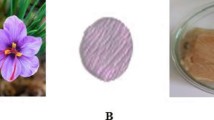Abstract
A gas freshness indicator consisting of the pH-sensitive dye bromothymol blue-phenol red (BTB-PR) was investigated for visible color changes of fish product quality based on the quantity of volatile amines. Chromaticity values of the gas indicator accurately tracked an increase in the ammonia content in the packaging headspace of fish products, especially skate (Raja kenojei). Gradual color changes of the gas indicator response correlated with the quality of fish including pH values during storage. Ammonia content was evaluated during the fish storage using headspace solid-phase microextraction analysis with gas chromatography-flame ionization detection. The validation results suggested that good linearity (R²=0.99) and recovery of 84.00%. The limits of detection and quantification were 8.70 and 26.30 mg/L, respectively. A pH values of skate and chromaticity of gas indicator were measured and the correlation with ammonia content was evaluated. Results of this study could prove the application of gas indicator as intelligent package for improvement of food safety.
Similar content being viewed by others
References
Heising JK, Dekker M, Bartels PV, Boekel MAJS. A non-destructive ammonium detection method as indicator for freshness for packed fish: Application on cod. J. Food Eng. 110: 254–261 (2011)
Pacquit A, Frisby J, Diamond D, Lau KT, Farrell A, Quilty B, Diamond D. Development of a smart packaging for the monitoring of fish spoilage. Food Chem. 102: 466–470 (2007)
Kim HJ, Eo JH, Kim SJ, Eun JB. Physicochemical changes in fermented skate (Raja kenojei) treated with organic acids during storage. Korean J. Food Sci. Technol. 42: 438–444 (2010)
Choi MR, Yoo EJ, Lim HS, Park JW. Biochemical and physiological properties of fermented skate. Life Sci. 13: 675–683 (2003)
Pacquit A, Lau KT, Diamond D. Development of a colorimetric sensor for monitoring of fish spoilage amines in packaging headspace. Sensors 1: 365–367 (2004)
Byrne L, Lau KT, Diamond D. Monitoring of headspace total volatile basic nitrogen from selected fish species using reflectance spectroscopic measurements of pH sensitive films. Analyst 127: 1338–1341 (2002)
Pacquit A, Lau KT, McLaughlin H, Frisby J, Quilty B, Diamond D. Development of a volatile amine sensor for the monitoring of fish spoilage. Talanta 69: 515–520 (2006)
Barat JM, Gil L, Breijo EG, Aristoy MC, Toldra F, Manez RM, Soto J. Freshness monitoring of sea bream (Sparus aurata) with a potentiometric sensor. Food Chem. 108: 651–688 (2008)
Chan ST, Yao MWY, Wong YC, Wong TW, Mok CS, Sin DWM. Evaluation of chemical indicators for monitoring freshness of food and determination of volatile amines in fish by headspace solid-phase microextraction and gas chromatography-mass spectrometry. Eur. Food Res. Technol. 224: 67–74 (2006)
Chun HN, Kim BR, Shin HS. Evaluation of a freshness indicator for quality of fish products during storage. Food Sci. Biotechnol. 23: 1719–1725 (2014)
Kim KH, Kim EJ, Lee SJ. New enzymatic time-temperature integrator (TTI) that uses laccase. J. Food Eng. 113: 118–123 (2012)
Arthur CL, Pawliszyn J. Solid phase microextraction with thermal desorption using fused silica optical fibers. Anal. Chem. 62: 2145–2148 (1990)
Pawliszyn J. New directions in sample preparation for analysis of organic compounds. TrAC-Trend. Anal. Chem. 14: 113–122 (1995)
Al-Masri MR, Al-Bachir M. Microbial load, acidity, lipid oxidation and volatile basic nitrogen of irradiated fish and meat-bone meals. Bioresource Technol. 98: 1163–1166 (2007)
Loughran M, Diamond D. Monitoring of volatile bases in fish sample headspace using an acidochromic dye. Food Chem. 69: 97–103 (2000)
Lee SY. Lee JY. Shin HS. Evaluation of chemical analysis method and determination of polycyclic aromatic hydrocarbons content from seafood and dairy products. Toxicol. Res. 31: 265–271 (2015)
Lee EJ, Seo JE, Lee JK, Oh SW, Kim YJ. Microbial and chemical properties of ready-to-eat skate in Korean market. J. Food Hyg. Saf. 23: 137–141 (2008)
Kuswandi B, Restyana A, Abullah A, Lee YH, Ahmad M. A novel colorimetric food package label for fish spoilage based on polyaniline film. Food Control 25: 184–189 (2012)
Author information
Authors and Affiliations
Corresponding author
Rights and permissions
About this article
Cite this article
Lee, GY., Lee, S. & Shin, HS. Evaluation of gas freshness indicator for determination of skate (Raja kenojei) quality during storage. Food Sci Biotechnol 25, 1497–1500 (2016). https://doi.org/10.1007/s10068-016-0232-2
Received:
Revised:
Accepted:
Published:
Issue Date:
DOI: https://doi.org/10.1007/s10068-016-0232-2



